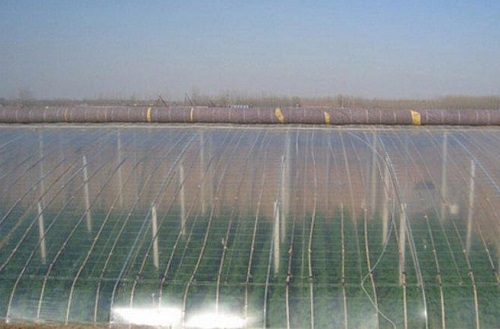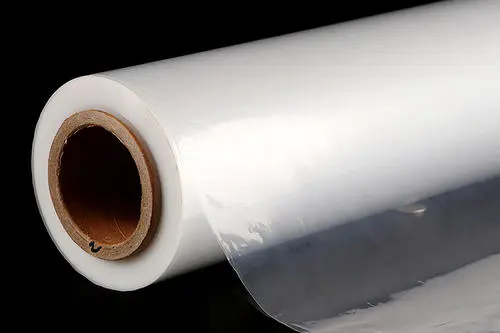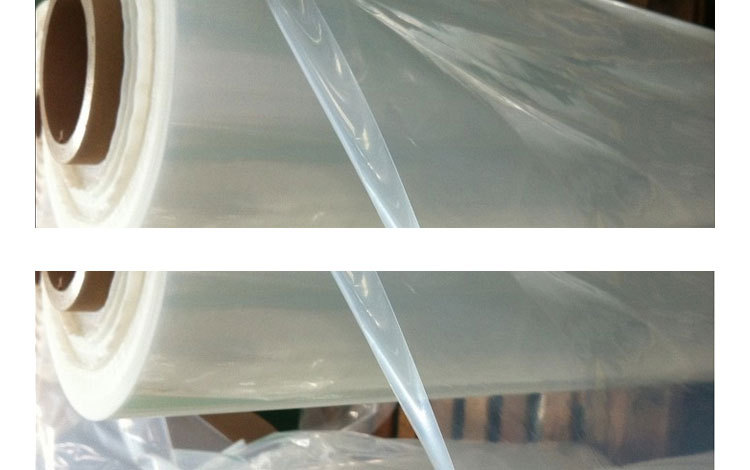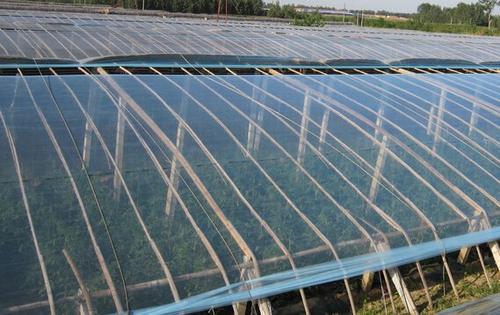Film multi-span greenhouse is one of the most widely used greenhouse covering materials in agricultural production, and its daily applications range from traditional in-ground arches, sunlight greenhouses, double-sided slope greenhouses, multi-span film greenhouses, and fungus greenhouses. So how should agricultural growers, especially new farmers, choose the appropriate greenhouse film when they are engaged in agricultural production, today I will give you a brief introduction and share.
The development stage of the greenhouse film At present, the structure of the greenhouse film product should be developed to multi-layer composite, and the performance tends to be high light transmission, high heat preservation, high strength, long life and continuous dripping period, anti-fog period, dustproof period, and other functions. Integrated development. The development of greenhouse film has generally gone through four stages according to different production materials: the first is polyethylene (PE) greenhouse film; the second is polyvinyl chloride (PVC) greenhouse film; the third is ethylene-vinyl acetate copolymer ( EVA) greenhouse film; the fourth is PO film, and the fifth-generation five-layer co-extruded film under development.
The main features and differences of various greenhouse films:
1. PVC (polyvinyl chloride) greenhouse film. This kind of film has good light transmittance, the new film has a total light transmittance of more than 85%, excellent moisture retention, low thermal conductivity, high tensile strength, and strong wind resistance. Good chemical stability, acid and alkali resistance. The disadvantage is that the film has a large proportion, and the use of the same area of the greenhouse is 1/3 more than that of polyethylene, resulting in an increase in cost; secondly, it becomes hard and brittle at low temperature, and it is easy to soften and relax at high temperature; after the additives are precipitated, the film surface For dust collection, the light transmittance is generally poor after one month of use. The residual film pollutes the soil and cannot be burned. Due to the environmental pollution caused by the generation of chlorine, the current usage is gradually decreasing.

2. PE greenhouse film. PE greenhouse film is light in texture, soft, easy to shape, good in light transmission, non-toxic, suitable for various greenhouse films and mulching films, and is currently the main agricultural film variety in my country. According to the needs of farmers, different product types such as PE anti-aging (single prevention), PE anti-aging dripping (double prevention), PE anti-aging dripping anti-fogging (three anti-fogging) can be produced, with good anti-aging and drip anti-fogging sex. Its disadvantages are: poor weather resistance, poor heat preservation, and difficult to bond. Manager Song learned that PE grouting film is more commonly used in the market.

3. The grouting film is processed again on the basis of the original polyethylene film, and the inner surface of the agricultural film is treated by coating, so that the treated film has the functional dripping antifogging agent tightly attached to it. On the inner wall of the shed film, a drug layer is formed on the inner surface of the shed film. As soon as the moisture in the shed touches the inner wall of the shed film, a water film will be formed, and then it will flow down along the slope of the shed due to its own gravity, so as to achieve the effect of eliminating fog and dripping. The essential difference with the previous greenhouse film is that the functional agent exists independently of the greenhouse film, so the time of anti-fogging and dripping functions depends entirely on the control of the coating process, the quality of the coating agent and the use of the agricultural film. The life span can generally reach more than one year.

Of course, grouting film also has individual defects. First, the anti-fog dripping agent is attached to the surface of the agricultural film, so its adhesion is not so strong. External force is easy to cause damage to the coating, so that it is easy to cause dripping in the damaged place. For example, when the shed, the friction between the inner wall of the shed and the bamboo poles on the shed, the above-mentioned situation will occur when high crops encounter agricultural film. At the same time, it is not easy to use grout film for crops that like high temperature and humidity, such as cucumber, bitter gourd, melon and so on. However, the shortcomings do not hide the truth. Even if the above situation occurs, the overall effect of agricultural film is still more obvious than traditional agricultural film. Because this product has obvious advantages in eliminating fog and dripping, and the cost is relatively low, it is about 1.1-1.2 yuan per square meter. Compared with the price of EVA film, the input cost is low, so it is favored by many vegetable farmers. The current grouting film differs in product quality due to different filling levels. Vegetable farmers must conduct multiple inspections on each product when purchasing and choose a formal company to purchase.
4. EVA film. EVA greenhouse film is a kind of greenhouse plastic film that is currently used in large numbers. This type of film has super light transmittance, with a light transmittance of more than 92%; it has excellent dripping anti-fogging properties, and the dripping period is 4- More than 6 months; has excellent heat preservation, dust resistance and super aging resistance (over 18 months). Three-layer EVA film can be widely used to produce high-end economical pollution-free vegetables, such as cucumber, tomato, pepper, bitter gourd, etc. The disadvantage is that the price is relatively high. According to different thickness specifications, the current market price is: 0.08 mm is generally 2.05-2.1 yuan/square meter, and 0.09 mm is 2.15-2.2 yuan/square meter.

5. PO film is also a new type of film developed in recent years. This type of film is a high-end functional polyolefin agricultural film produced from polyolefin. It has light transmittance, continuous anti-fogging, dripping and heat preservation. Etc., it is in a leading position among greenhouse films, with high cost performance, and is the most promising type of film. The current thickness of po film ranges from 8 filaments, 12 filaments, and 15 filaments.
